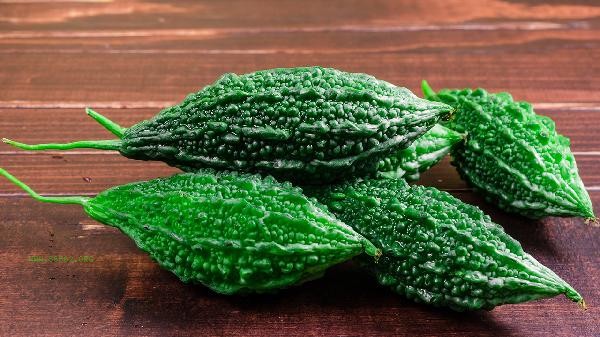Bitter gourd can be reduced in bitterness and retain its nutritional value through blanching, salting, and pairing with specific ingredients.

1. Blanching treatment
Put the sliced bitter gourd into boiling water and blanch for 30 seconds to 1 minute. High temperature can decompose some bitter substances such as cucurbitacin C. Immediately after blanching, rinse with cold water to maintain a crispy and tender taste, suitable for cold mixing or quick stir frying. Be careful not to take too long to avoid nutrient loss.
2. Salinize and remove bitterness
Rub bitter gourd slices evenly with salt and let them stand for 15 minutes. Salt can penetrate the cell wall and precipitate bitter juice. After pickling, squeeze out the water and rinse to remove about 60% of the bitterness. This method is especially suitable for making momordica charantia fried eggs or Stuffed bitter melon, and the taste is more acceptable.
3. Soaking in ice water
Soak thinly sliced bitter gourd in ice water for 2 hours to slow down the release of bitterness in a low-temperature environment. A small amount of baking soda can be added to water to neutralize alkaloids. After treatment, the bitterness is mild and returns to sweetness, making it suitable for making salads or sashimi dishes.

4. Match with seasoning
When cooking, add fermented condiments such as honey, lobster sauce or Fermented bean curd to form a layered sense of freshness and bitterness. High temperature explosion of minced garlic and chili can also mask some bitterness, making it suitable for heavy flavored cooking methods such as dry stir frying bitter gourd.
5. Material selection techniques
Choose tender bitter melon with plump and green protrusions on the epidermis, which has a relatively light bitterness. Removing the white bitter core at both ends can significantly reduce bitterness, and mature yellow skinned bitter gourd is more suitable for stewing soup and freshness. Bitter gourd is rich in bitter gourd glycosides, vitamin C, and dietary fiber, and has the effect of controlling sugar and lowering cholesterol. The recommended daily consumption is 2-3 times a week, with 100-150 grams per time. gastrointestinal hypersensitivity can be relieved by a small amount of ginger juice with meals, and diabetes patients can appropriately increase the frequency of eating. Paired with high-quality protein ingredients such as eggs and lean meat, it can balance nutrition and improve taste acceptance. Retaining an appropriate amount of bitterness is more conducive to realizing its health benefits. For first-time users, they can start adapting from the isothermal and dish style of bitter melon stir fried eggs.









Comments (0)
Leave a Comment
No comments yet
Be the first to share your thoughts!